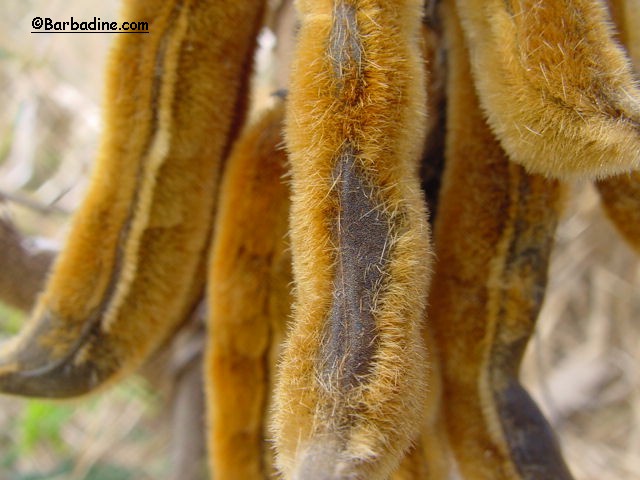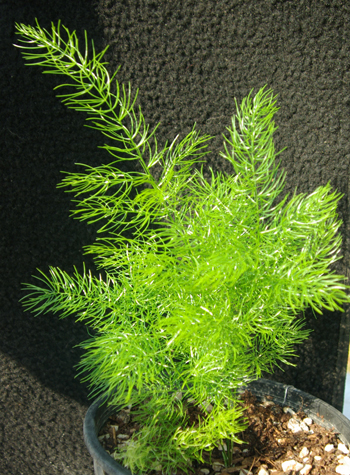1. Ultra Guggulow by Doctor's Best - stimulates thyroid, increases metabolisim, lowers cholesterolThe mukul myrrh (Commiphora mukul) tree is a small, thorny plant distributed throughout India. Guggul and gum guggulu are the names given to a yellowish resin produced by the stem of the plant. This resin has been used historically and is also the source of modern extracts of guggul.
Gum Guggul Gum guggul is related to myrrh gum and also to Boswellia serrata, another resinous herb prominent in the Ayurvedic materia medica. Gum guggul, often referred to simply as "guggul," has been used in the Ayurvedic herbal tradition since at least 600 B.C. The herb is mentioned in the Vedas, the Holy Scriptures of India, which are estimated to date back anywhere from 3,000 to 10,000 years. Modern investigation into gum guggul began in 1964, with a series of tests conducted by G.V. Satyavati. The inspiration for this research is a Ayurvedic treatise written in Sanskrit that describes in detail a condition called "coating and obstruction of channels." Impressed by the apparent analogy to the cardiovascular system, Satyavati and others initiated a series of tests to determine if gum guggul, which was mentioned in the treatise, would have any effect on blood lipid levels. This set the stage for an extensive series of studies on gum guggul's pharmacology and clinical effects.
Guggulsterones Systematic analysis of gum guggul resin carried out by Indian researchers in the 1980s identified the active ingredients as a group of lipid-based compounds called guggulsterols and guggulsterones. It was determined that two members of this group, Z-guggulsterone and E-guggulsterone, are largely responsible for the herb's effect on cholesterol and blood fats. An extract standardized for guggulsterone content of gum guggul was then developed by the CDRI in Lucknow, India. This extract, called "Gugulipid", is now the preferred form of gum guggul for use in clinical studies.
Ultra Guggulow contains Gugulipid standardized to supply 25 mg of guggulsterones per 1000 mg of extract.
2. Nettle Root-Power fom Nature's Herbs - diuretic, blocks conversion of testesterone to estrogenNettle is highly nutritive, being rich in chlorophyll, beta carotene, vitamins A, C, E and K, several of the B vitamins, tannins, volatile oils, flavonoids, iron, calcium, potassium, phosphates, and various other minerals, especially silica. Today nettle is recognised as having astringent, expectorant, galactagogue, tonic, anti-inflammatory, hemostatic, and diuretic properties, and is recommended for treating bone and joint conditions, inflammation and irritation of the urinary tract and for preventing urinary system gravel, whilst the diuretic action of the plant has been shown to significantly increase urine volume and can help to alleviate bladder infections.
Some of the more recent research on BPH (prostate enlargement) and stinging nettle indicates that the nettle root can interfere with or block a number of hormone-related chemical processes in the body that are implicated in the development of BPH. In clinical research, nettle has demonstrated the ability to stop the conversion of testosterone to dihydrotestosterone (by inhibiting aromatase, an enzyme required for the conversion), as well as to directly bind to SHBG (sex hormone binding globulin) itself - thereby preventing SHBG from binding to other hormones. Other research also reveals that nettles can prevent SHBG that has already bound to a hormone from attaching to the receptor sites on the prostate, as well as to decrease the production of estrogens (estradiol and estrone) by inhibiting an enzyme required for their production. In summary, most of the intercellular processes required to trigger the prostate to grow new cells and enlarge seems to be inhibited by nettle root. Human and animal clinical studies have confirmed these effects and also demonstrated that nettle root works as well as the drug finasteride which is prescribed for BPH and is also better tolerated than the drug.
The effect of nettle root on dihydrotestosterone (DHT) levels has also made it a treatment for hair loss, as male pattern balding has often been linked to an excess of DHT, as has hair loss in women too. In folklore it was always believed that nettles were an effective treatment for baldness and modern science appears to validate this belief. Nettle root is also valuable as a source of lignans, a type of phytoestrogens, which have become more and more valued in recent years, and which accounts for its galactogogue property (increases breast milk production). Nettle root also contains a number of chemical compounds which appear to significantly stimulate the immune system.
3. Chasteberry Power from Natures Herbs - regulates hormonal balance, boosts fertility, reduces negative effects of elevated testesterone and estrogenResearch into chasteberry has shown the presence of various flavonoids, and Yugoslavian chemists have suggested that the ripe fruits contain certain steroids. Chasteberry increases the production of luteinizing hormone, and inhibits the release of follicle-stimulating hormone. By this sex-hormone modifying action, chaste berry modifies the secretion of both estrogen and progesterone.
Chasteberry has been renowned since ancient times as a treatment for various problems of the female reproductive system. It is a traditional remedy for irregular periods, amenorrhea and dysmenorrhea, and has long been used to help ease the symptoms of the menopause. More recently it has become recognised in Europe as a standard herbal treatment for general PMS symptoms and is also commonly used to treat other problems which can be linked to the menstrual cycle, such as migraine and acne. Chasteberry also has a reputation for alleviating fibrocystic breast disease, relieving the pain of endometriosis and for regulating ovulation and therefore promoting fertility. From all these uses it is clear that the berry has distinct hormonal effects on the body, and in modern times it's general success in these applications has prompted a great deal of research to be carried out to try and discover its mode of action. However, so far the chasteberry has managed to retain its secrets and the constituents responsible for its therapeutic actions have not been positively identified. Nevertheless, it is believed that the berry has the effects it does because it contains chemical compounds which act on the pituitary gland, the body's master gland which both produces hormones and from its location at the base of the brain directs the other endoctrine glands to produce hormones. Chasteberry is believed to effectively regulate the pituitary gland's functions, especially its progesterone and prolactin functions, and to therefore have a considerable influence on the body's hormonal balance, normalising it by enabling greater or lesser hormone release to occur, and making the chasteberry one of the world's most medically interesting herbs and the subject of ever increasing study.
Given the amount of study carried out on chasteberry, there is now a significant body of scientific research supporting its use for various complaints. Its use with PMS has been the main area of study, with trial results indicating that between 60% and 90% of women given chasteberry show reduced PMS symptoms. Results clearly improve over time, which is what should generally be expected from herbal treatments, but an important point about chasteberry is that because its overriding benefit is the long term balancing of a woman's hormonal system, it can never be regarded as a fast acting herb, but must be seen as a gradual remedy which needs to be taken for some months to realise its therapeutic properties.
Another area of considerable study on the effects of chasteberry has been its use for relieving breast tenderness or cyclic mastalgia. Several studies have reported a significant reduction in breast pain in women given chasteberry, again based on trials which were carried out over several months. Another recent study was on the berry's effects on women with a form of irregular menstruation known as luteal phase defect, a condition believed to be related to excessive levels of the hormone prolactin. After a trial lasting 3 months significant improvements were noted, reinforcing the claims made for chasteberry as a regulator of the pituitary gland's release of prolactin.
Although no studies have been carried out on the effects of chasteberry for those in the menopause, this application of the berry continues to be very popular and it is as firmly established as ever as one of the most important herbs for treating menopausal symptoms. It is also prescribed by herbalists for uterine cysts, for depression, anxiety and fatigue, and for use as an anti-androgen, as it is believed to inhibit the action of androgenic hormones.
4. Chrysin from Jarrow - blocks the conversion of elevated testesterone to estrogen Chrysin (5,7-Dihydroxyflavone) is a potent bioflavonoid found in the plant Passiflora coerula, a member of the passion flower family. Honey combs also contain small amounts.
Chrysin is the most powerful of several flavonoids that have been extensively tested in vitro and found to exhibit anti-estrogenic activity by inhibiting the aromatization process. The effect of a reduction in estrogen production is a reduction in the signal being sent to the pituitary to attenuate the secretion of luteinizing hormone. When LH secretion is maintained or increased, testosterone production is maintained or increased as a consequence.
Chrysin can impact lean body mass by enhancing metabolism of testosterone and androstenedione. This product has been shown to have a significant effect in modulating the response to stress. It binds to receptors in the brain known as the benzodiazepine specific receptor sites. As a result, Chrysin can aid athletes in dealing with the stress of training.
Unfortunately the effectiveness of Chrysin in vivo (in the human body) is limited by its poor oral bioavailability. Research has shown that most of the Chrysin ingested is excreted. Chrysin may be more effective when co-administered with Bioperine®, an extract of black pepper that has been shown to improve the absorption of certain nutrients taken with it.
5. Tribulus from NOW - diuretic, elevates testesteroneTribulus terrestris (Sanskrit name: gokshura) has been extensively used for sexual dysfunction in both; males and females. In China and India , the herb Tribulus terrestris has been touted as liver, kidney, urinary, and cardiovascular remedies. In Ayurvedic science, the herb is considered to be a general health tonic and urinary tract disinfectant. In Traditional Chinese Medicine Tribulus terrestris is known under the name Bai Ji Li
It is a natural herbal alternative to synthetic anabolic hormones without any clinically proven toxic effects. Administration leads to increased muscle mass in active sports by activating the enzyme associated with energy metabolism. At the same time it has also been reported to have the ability to stimulate some functions associated with the increase of the body's natural endogenous testosterone and lutenizing hormone (LH) levels. With the increase of the body's natural endogenous testosterone level, it can help alleviating some symptoms associated with male menopause
 Astragalus is believed to build stamina and vitality. It has a reputation for improving overall health by helping the body to maintain a healthy immune system. As an antioxidant, it helps to counteract cell damage caused by unstable oxygen molecules called free radicals.
Astragalus is believed to build stamina and vitality. It has a reputation for improving overall health by helping the body to maintain a healthy immune system. As an antioxidant, it helps to counteract cell damage caused by unstable oxygen molecules called free radicals. 







